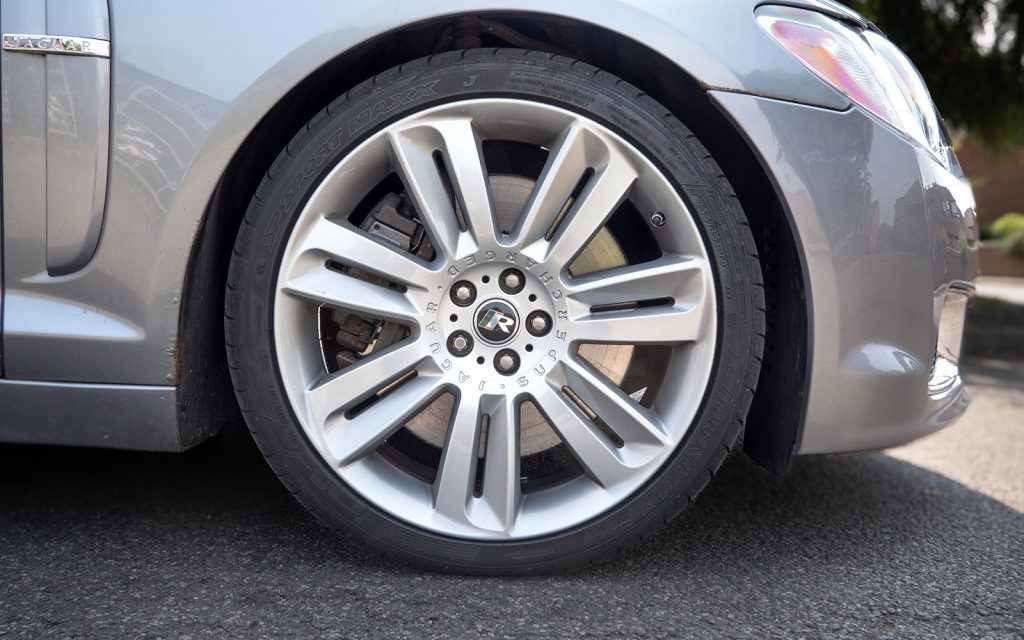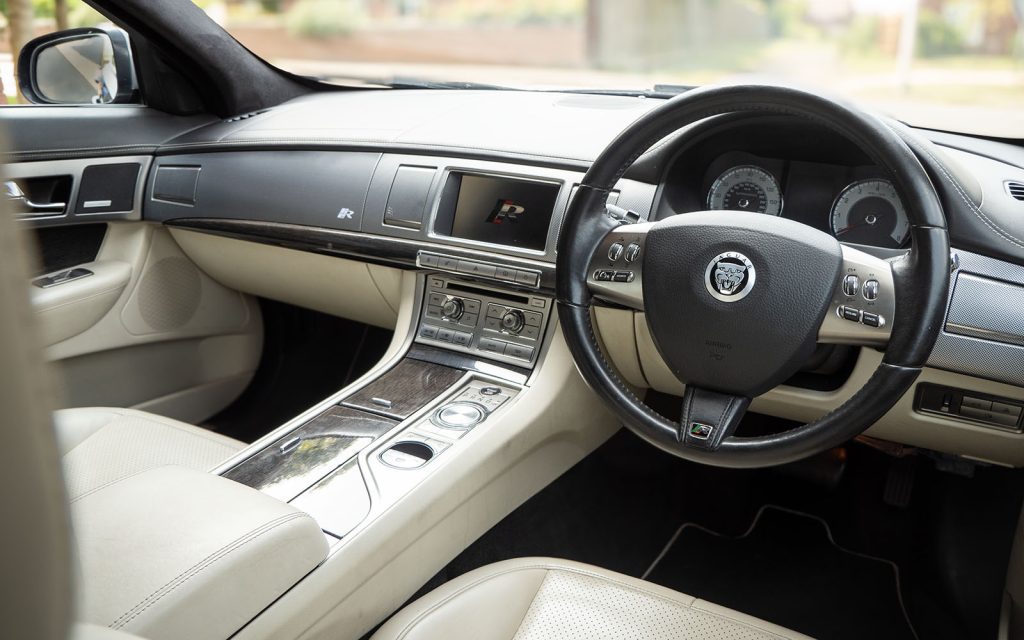Table of Contents
Jaguar XF: What You Need to Know
So, you’re eyeing a used Jaguar XF or its rowdier sibling, the XFR? Excellent choice. These beauties are the epitome of British elegance with just a splash of that notorious bad-boy charm. But before you get all revved up, let’s dive into the nitty-gritty with our comprehensive Jaguar XF XFR buyers guide for what you need to look out for when hunting for that perfect example.
First Impressions
Before you even pop the bonnet, take a good, long look at the car. We’re not talking about admiring the sleek lines and aggressive stance (though that’s always fun). No, you need to play detective here. Check for any signs of uneven panel gaps, which could indicate a previous accident. Keep you eyes open for rust too. Pay close attention to the wheel arches, door sills, and under the car. A little rust on an older Jaguar is fairly likely, and not always a major problem, but be cautious, and investigate further if you find some.
Heart of the Beast
The Jaguar XF and Jaguar XFR come with a variety of engines, from the economical 2.2-litre diesel to the snarling 5.0 litre V8 in the XFR. Whichever engine you’re considering, give it a thorough inspection. Check the oil – it should be clean and free of metal shavings. While you’re at it, take a whiff of the oil. If it smells burnt, that engine’s been through the wringer.
Listen for any unusual sounds on startup. A ticking noise could indicate valvetrain issues, while knocking sounds might mean more serious problems. Also, look out for any smoke from the exhaust. Blue smoke means oil burning, white smoke suggests coolant in the engine, and black smoke points to a rich fuel mixture.
Transmission
The Jaguar XF and XFR boast some pretty sophisticated transmissions, but like any transmission, they can be a source of headaches if not properly maintained. Take the car for a test drive and pay close attention to how it shifts. Any delays, clunking sounds, or slipping could be signs of a failing transmission. The ZF 6-speed and 8-speed automatics are generally very reliable though.
Suspension and Handling
Jaguars are known for their refined ride quality, but this can be compromised by worn suspension components. Listen for any clunks or rattles when driving over bumps. Uneven tyre wear can also indicate alignment issues or worn suspension parts. The XF’s suspension is quite sophisticated, so repairs can be costly.

Electronics
Even 15 year old Jaguars are packed with electronics, and while this makes for a great driving experience, it can also be a Pandora’s box of problems. Check that all the gadgets and gizmos work – from the infotainment system to the power windows and seats. The XF’s touchscreens can be a bit temperamental, so make sure everything is responsive and free of glitches.

Brakes
The Jaguar XF/XFR’s brakes are generally robust, but they need to be checked like any other component. Look for any vibrations or noises when braking, which could indicate warped discs or worn pads. Also, check the brake fluid level and condition as best you can. Spongy brakes or a low fluid level could mean there’s air in the system or a leak.
Service History
A well-documented service history is worth its weight in gold. It provides a glimpse into how the car has been treated over the years. Regular oil changes, brake fluid changes, and timely repairs are all signs of a well-maintained vehicle. Beware of any gaps in the service history – these could indicate periods of neglect, which may well lead to issues in the longer term.
Jaguar XF Common Issues
Every car has its quirks, and the Jaguar XF/XFR is no exception. Here are a few common issues to be aware of:
- Timing Chain Tensioners (V8 Models): Early V8 models, particularly the 5.0-liter engines, have been known to suffer from timing chain tensioner issues. A rattling noise at startup could be a sign of this problem. If not addressed, it can lead to catastrophic engine failure.
- Diesel Particulate Filter (DPF) (Diesel Models): If you’re looking at a diesel XF, be aware that the DPF can become clogged, especially if the car has been used mainly for short trips. A warning light on the dash will usually indicate this issue.
- Cooling System: Check the coolant level and look for any signs of leaks. The XF’s cooling system can be a bit temperamental, and any leaks should be addressed immediately to prevent overheating.
- Water Leak Issues: Inspect common leak points like the water pump Y pipe and the Valley pipe beneath the supercharger. Look for white or powdery residue and low coolant levels.
- Supercharger Examination: Listen for a “donk donk donk” sound when turning off the engine, indicating the need for coupling replacement. A light thumping from the top of the engine suggests bearing issues.
- Electrical Gremlins: From faulty window regulators to malfunctioning infotainment systems, be prepared for the occasional electronic hiccup.
Negotiating
Once you’ve given the car a thorough once-over and are satisfied with its condition, it’s time to talk money. Use any issues you found during your inspection as bargaining chips. Remember, the asking price is just that – an asking price. There’s always room for negotiation.
Jaguar XF XFR Buyers Guide (video version)
Summary
We hope you found our Jaguar XF XFR buyers guide useful and if you do have any questions, chat to us via our live chat, call us on +44 01789 774444 or email us on info@paramount-performance.com.